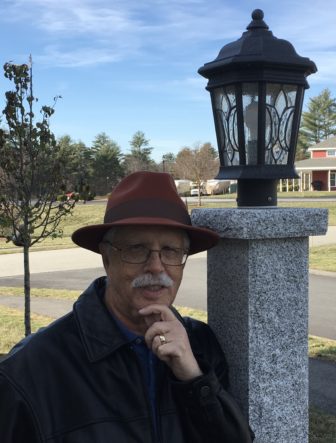By MARK OKRANT, InDepthNH.org
What’s up with New Hampshire’s dependence upon approximately 350-400 thousand annual visitors from Canada?
While English speaking Canadians are important to the Granite State, Francophone Canadians—primarily from Quebec and New Brunswick provinces—provide the largest contingent (59% in 2015). In order to lure these visitors, New Hampshire must compete with more popular destinations in Maine, Vermont, and Massachusetts.
Who are these Francophone visitors and what steps are necessary to attract them?

Mark Okrant, NH Travel Guru
According to research provided to the Division of Travel and Tourism Development (DTTD) by Environics Analystics, French-speaking Canadians are primarily suburban, affluent households that show an interest in outdoor activities (e.g., camping, hiking, and skiing). The largest market areas for these visitors are Montreal, Quebec City, and the Eastern Townships.
Environics Analytics reports that the largest percentage of Francophone Canadian visitors have heads of household who are 45-54 years of age. 44 percent have children under the age of 12 years living at home. Household incomes among this group average approximately $108 thousand CDN ($86,000 US).
Among those reporting their visitor spending, 62 percent spent one thousand dollars or more during their visits. Their preferred forms of accommodations were hotels (37.0%), homes of friends or relatives (6.4%), and motels (4.5%).
French Canadians appear to be moderate television watchers, with preferred genres being movies (68%), comedy programs (43%), news programming (43%), sports (42%), documentaries (41%), and crime dramas (40%). Favored programming is almost exclusively in French. Additionally, this audience tends to be avid newspaper readers, and many still prefer brochures and catalogues to the Internet. Visitors utilized the Internet most to book hotel rooms (15%), book airline tickets (14%), and to book travel packages (11%).
Which activities in New Hampshire do French Canadian visitors prefer? Much like their English-speaking counterparts, they exhibit a preference for sightseeing (33%), beach visits (26%), and shopping (19%). Among sports and activities, hiking/walking (41%), gardening (30%), camping (26%), swimming (14%), and downhill skiing (13%) are most popular. There is a strong preference for the following attractions or events: museums (23%), live theater (20%), zoos/aquariums (17%), nightclubs and spas (15% each).
While the state has been successful in attracting French Canadian visitors, there is much that can be done to attract greater numbers. First on any list of actions is to provide brochures, signage, and basic instructions in French. Frontline personnel at welcome centers, restaurants and lodgings, attractions, and retail businesses are the keys to providing a warm welcome to these neighbors from the north. Many French Canadian visitors are able to speak rudimentary English (at the very least). However, they are looking for a sense of commitment on the part of the people who serve them. The state’s new Bienvenue program—a partnership among state government, Plymouth State University, and Franco-American organizations—has taken a bold step to prepare the tourism industry to engage this important travel segment. The future looks bright for French Canadian visitation in New Hampshire.
After forty years as an educator, researcher, and consultant, Mark Okrant joined IndepthNH.org to offer concise, informative insight into New Hampshire’s travel and tourism industry as a business, while showcasing the people and places you want to know. This guy’s really been around. And, he’s funny, too.
For more about Mark’s compelling tourism-based murder mystery series, visit www.markokrant.com.
For information on current things to do in New Hampshire, go to:
http://www.visitnh.gov/what-to-do/event-calendar.aspx





